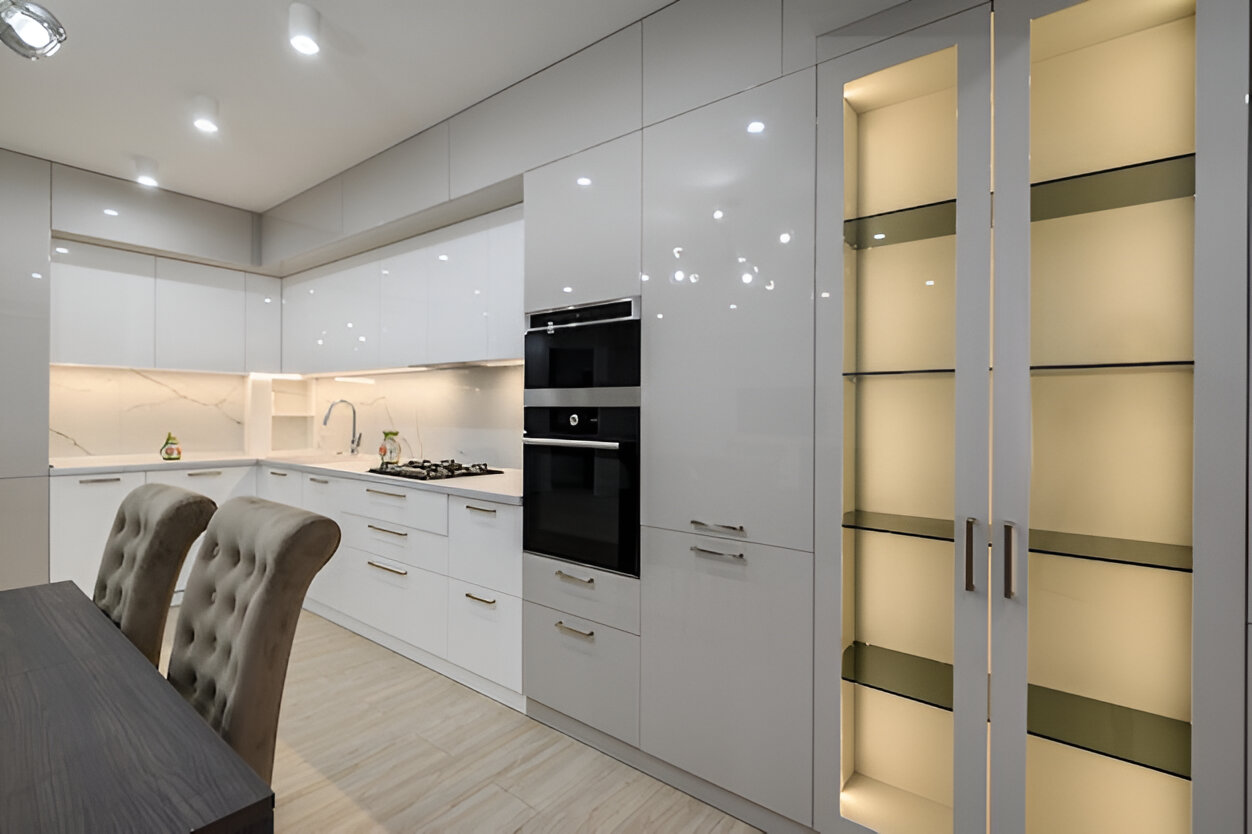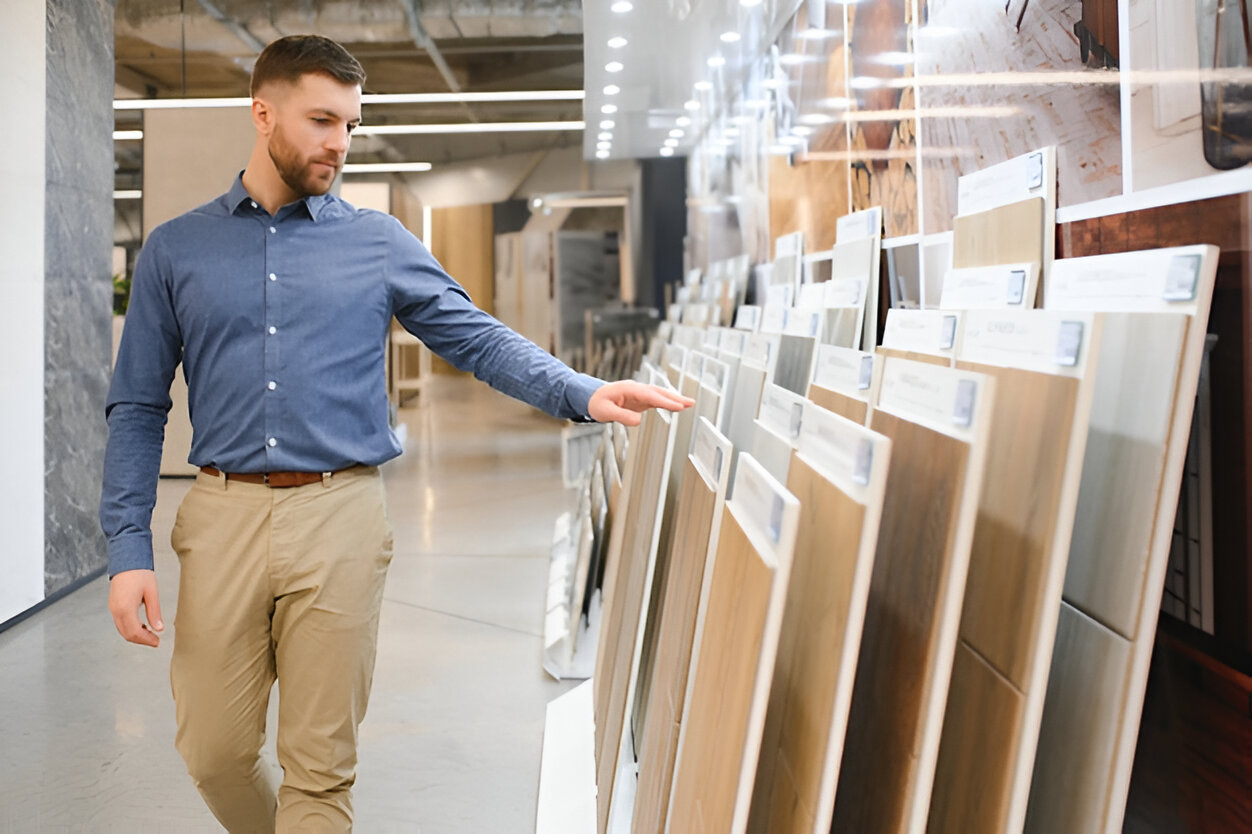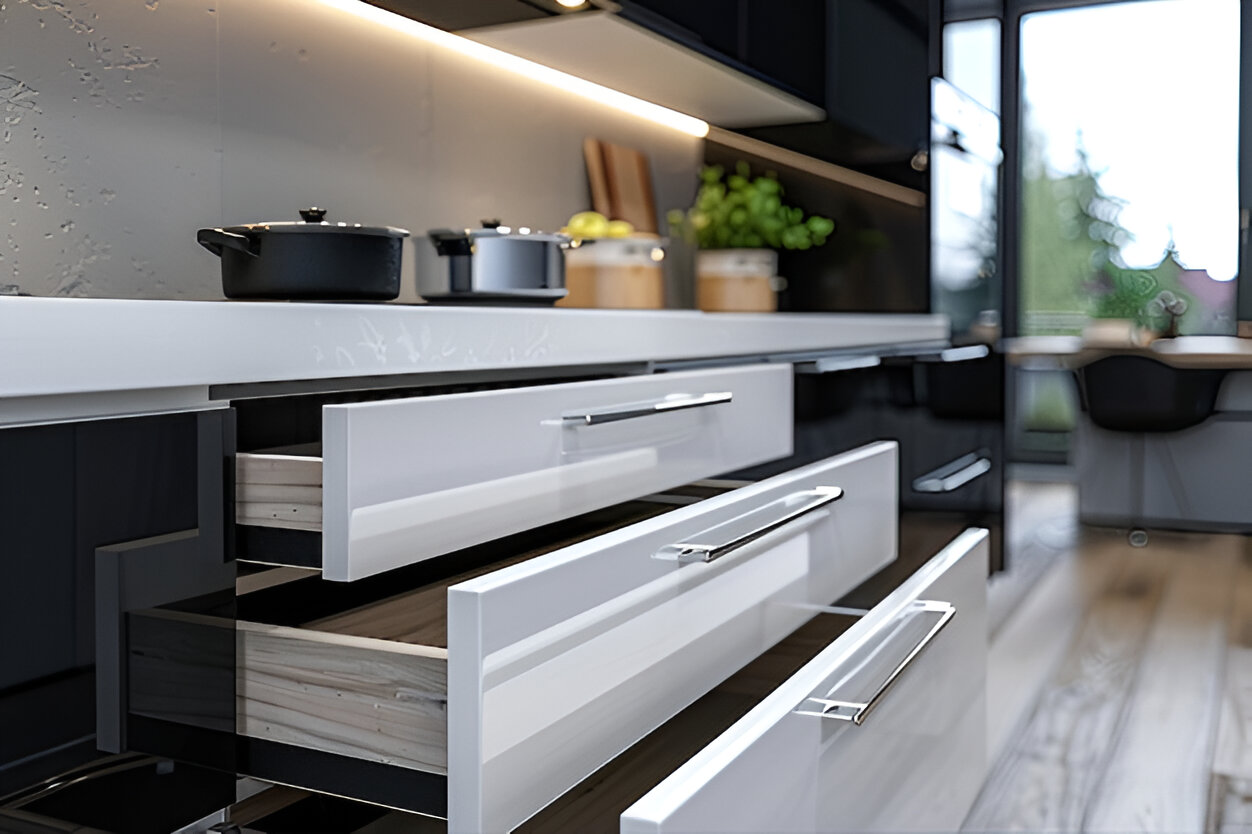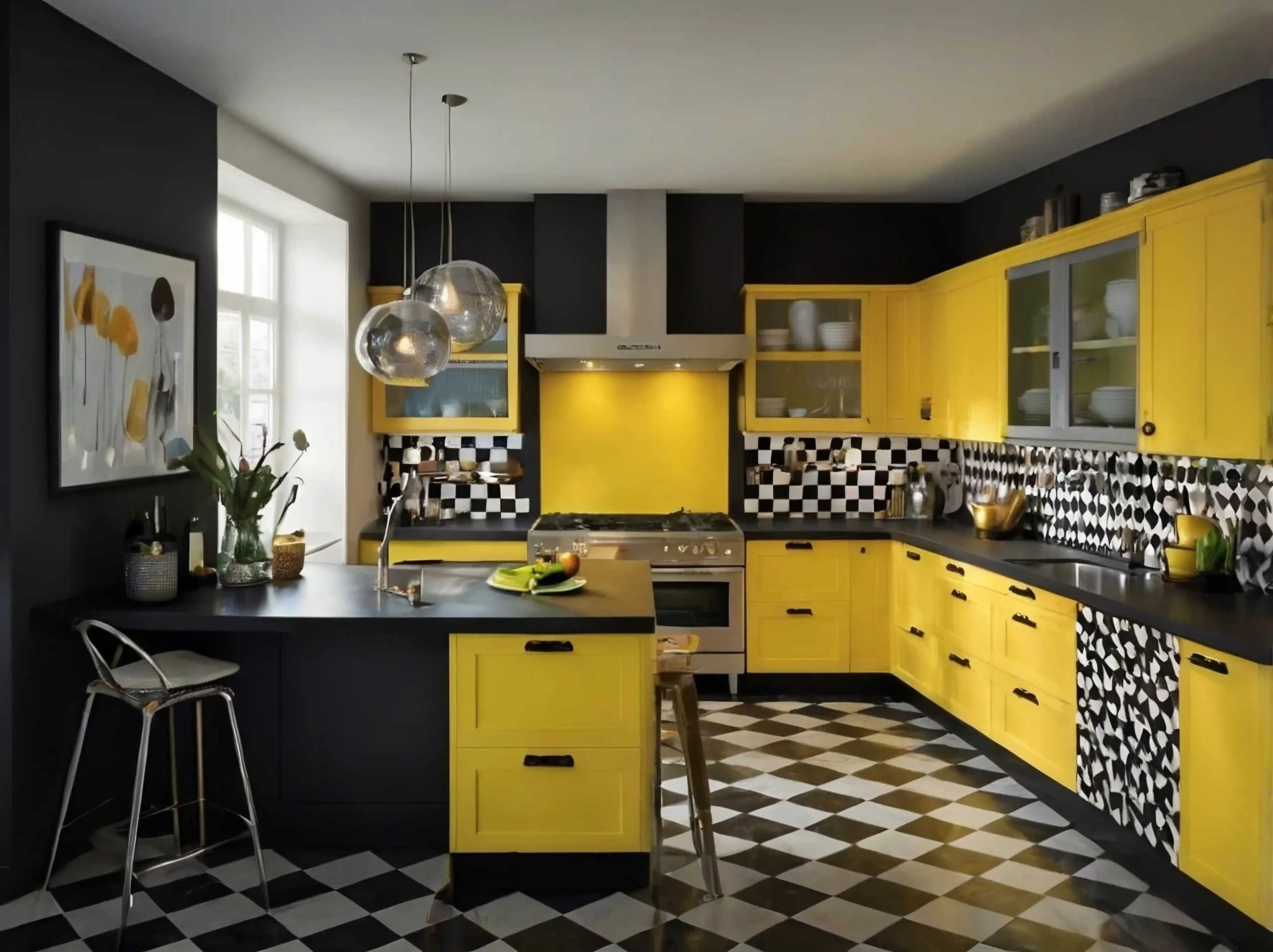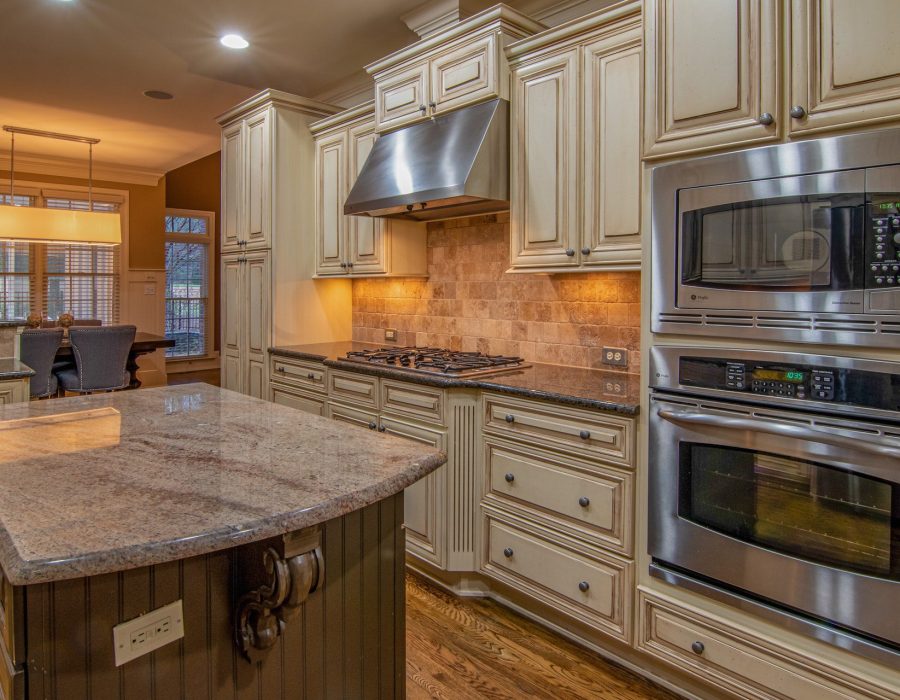Do you want to learn about raised panel cabinet maintenance? Raised panel cabinets add a touch of elegance to your kitchen or bathroom and require regular maintenance to preserve their splendor. This comprehensive guide will walk you through the step-by-step process of maintaining raised panel cabinets, from cleaning and polishing to preventing damage and repairing minor issues. By following these tips, you can ensure that your raised panel cabinets remain pristine for years in Oak Creek, Wisconsin.
Importance of cabinet maintenance
Maintenance and care for raised panel cabinets is crucial for several reasons:
- Longevity: Regular maintenance helps extend the lifespan of your cabinets. Caring for them properly prevents premature wear and damage, ensuring they remain functional and aesthetically pleasing for years.
- Appearance: Cabinets contribute significantly to a room’s overall look and feel. Proper maintenance, including cleaning, polishing, and addressing any issues promptly, helps preserve their appearance and keeps them looking their best. Maintaining a cohesive and well-maintained aesthetic in your home or workspace is particularly important.
- Value: Well-maintained cabinets can add value to your property. Potential buyers will appreciate cabinets in good condition if you plan to sell your home or office. Regular maintenance shows that you have taken care of your property, making it more appealing to potential buyers and potentially increasing its market value.
- Functionality: Cabinets are meant to provide storage and organization solutions. Regular maintenance ensures that drawers and doors function properly, preventing issues such as sticking, misalignment, or difficulty opening and closing. Keeping them in good working order can maximize their functionality and make it easier to access and store items.
Benefits of raised panel cabinets
Raised panel cabinets offer several benefits, making them popular in traditional and contemporary kitchen and bathroom designs. Here are some key advantages:
- Classic and Timeless Look: Raised panel cabinets have a traditional and elegant appearance that can enhance the overall aesthetic of any space. The raised panel design adds depth and dimension to the cabinet doors, creating a sophisticated, timeless look that complements various design styles.
- Added Texture and Visual Interest: The raised panel design provides a sense of depth and texture to the cabinets, adding visual interest and making them stand out. This can be particularly beneficial in spaces where other design elements may be minimal, as raised panel cabinets can become a focal point and add character to the room.
- Versatile Design Options: Raised panel cabinets come in various styles, finishes, and materials, allowing customization to suit different preferences and design schemes. Whether you prefer a more traditional, ornate look or a sleek and contemporary style, raised panel options are available to match your desired aesthetic.
- Enhanced Durability: Raised panel cabinets are typically made from sturdy materials such as solid or high-quality engineered wood. This construction provides durability and longevity, ensuring the cabinets can withstand daily wear and tear, resist impacts, and maintain structural integrity over time.
Understanding Raised Panel Cabinets
Raised panel cabinets consist of a solid wood frame with a center panel that is slightly raised. The panels can be made from solid wood or veneer and come in various styles and designs. The raised panel construction adds visual interest and elegance to the cabinets, making them popular for homeowners seeking a classic and refined look. Raised panel cabinet maintenance is important if you want to preserve its style.
Raised panel cabinets are available in different wood types, each with unique characteristics and maintenance requirements. Common wood options include oak, maple, cherry, and birch. Understanding the type of wood used in your cabinets is important to ensure proper care and maintenance.
Regular Cleaning and Dusting
Using the right products is crucial for care tips for raised panel cabinets. Opt for mild, non-abrasive cleaners specifically formulated for wood surfaces. Avoid harsh chemicals or abrasive materials that can damage the cabinet’s finish.
Start by removing dust or debris from the cabinet surfaces using a soft, lint-free cloth or a microfiber duster. Pay attention to the crevices and corners where dust tends to accumulate. Next, dampen a cloth with a mild detergent solution and gently wipe the cabinet surfaces. Be sure to dry the cabinets thoroughly to prevent moisture damage.
Avoiding Moisture Damage
Moisture is the enemy of raised panel cabinets, as it can lead to warping, swelling, and even mold growth. Avoid placing hot or wet items on the surfaces for raised panel cabinet maintenance. Use coasters or mats under glasses and cups to prevent condensation from damaging the wood. Additionally, ensure proper ventilation in your kitchen or bathroom to minimize moisture buildup.
Regularly check for leaks in plumbing fixtures to further prevent moisture damage and address them promptly. Wipe up spills or excess moisture immediately to prevent them from seeping into the wood. Installing a dehumidifier in areas prone to high humidity can also help control moisture levels.
Treating Stains and Spills
Accidents happen, and spills are inevitable. Act quickly to minimize spills’ impact on your raised panel cabinets. Immediately blot the spilled liquid with a soft, absorbent cloth. Avoid rubbing the spill, as it may spread and cause further damage. Once the spill is absorbed, clean the area with a mild detergent solution and dry it thoroughly.
Over time, raised panel cabinets may develop stains. For removing stains from raised panel cabinets, create a paste by mixing baking soda with water. Apply the paste to the stained area, gently scrub it with a soft cloth, and then wipe it clean. You can use a commercial wood stain remover following the manufacturer’s instructions for stubborn stains. Just installing the cabinets isn’t enough, you need to take care of them too.
Polishing and Protecting the Finish
Polishing raised panel cabinet surfaces enhances their appearance and provides a protective layer. Regular polishing helps maintain the wood’s luster and protects it from daily wear and tear.
Select a high-quality furniture polish that is suitable for wood surfaces. Apply a small amount of polish onto a soft cloth and gently rub it onto the cabinet surfaces in a circular motion. Follow the manufacturer’s instructions for the best results. Avoid overusing polish, which can leave a residue or build up on the cabinets.
Repairing Minor Damage
Despite raised panel cabinet maintenance, they may develop minor scratches, dents, or chips over time. These can be addressed with simple DIY techniques.
Use a touch-up marker or crayon that matches the cabinet’s finish for minor scratches. Fill in the scratch gently and then buff the area with a soft cloth. Deeper scratches or chips can be repaired using wood filler or putty. Once the filler has dried, sand it lightly and apply a matching stain or paint to blend it with the surrounding surface.
Preventive Measures for Longevity
Direct sunlight can cause the wood color of raised panel cabinets to fade over time. Protect your cabinets using curtains, blinds, or window films to block out excessive UV rays.
Avoiding excessive force or slamming the cabinet doors and drawers is great for preventing damage to raised panel cabinets. Install soft-close hinges to prevent damage from abrupt closing. Also, avoid placing heavy objects on the shelves or inside the cabinets to prevent strain or structural damage.
Conclusion
In conclusion, cleaning raised panel cabinets requires regular care and attention. By following the outlined steps, including regular cleaning and dusting, avoiding moisture damage, treating stains and spills promptly, polishing and protecting the finish, repairing minor damages, and implementing preventive measures, you can ensure that your raised panel cabinets remain in pristine condition for years to come. Remember, a little care goes a long way in maintaining the splendor of your raised panel cabinets if you buy them from our store, Badger Cabinets.
FAQs
1: Can I use any cleaning product on raised panel cabinets?
It is generally safe to use cleaning products on raised panel cabinets, but choosing the right ones is important. Avoid abrasive or harsh chemicals that can damage the finish or wood. Instead, opt for mild, non-abrasive cleaners specifically designed for wood surfaces.
2: How often should I polish my raised panel cabinets?
The frequency of polishing raised panel cabinets depends on their specific needs and the use they receive. As a general guideline, it is recommended to polish them every 3 to 6 months to maintain their luster and protect the wood. However, factors such as the type of finish, exposure to sunlight, and regular cleaning routine can influence the frequency.
3: Can I repair major damages to raised panel cabinets myself?
Repairing major damages to raised panel cabinets can be a complex task requiring professional expertise. While you may be able to address minor scratches or small issues yourself using appropriate touch-up kits, major damages such as deep scratches, cracks, or structural issues are best left to experienced professionals.
4: Are there any specific products I should avoid placing on raised panel cabinets?
Certain products should be avoided on raised panel cabinets to prevent potential damage. Avoid harsh solvents, ammonia-based cleaners, bleach, abrasive sponges, or scouring pads, as they can strip the finish, cause discoloration, or scratch the wood surface. Additionally, it’s advisable to keep hot objects, such as pots and pans, directly off the cabinet surface to prevent heat damage.
5: How can I prevent the wood color from fading on my raised panel cabinets?
To prevent the wood color from fading on raised panel cabinets, it’s important to take certain precautions. Direct sunlight can cause the wood to fade over time, so consider using curtains, blinds, or UV-protective films on nearby windows to reduce exposure. Additionally, avoid placing the cabinets near heat sources, as excessive heat can lead to color changes.



